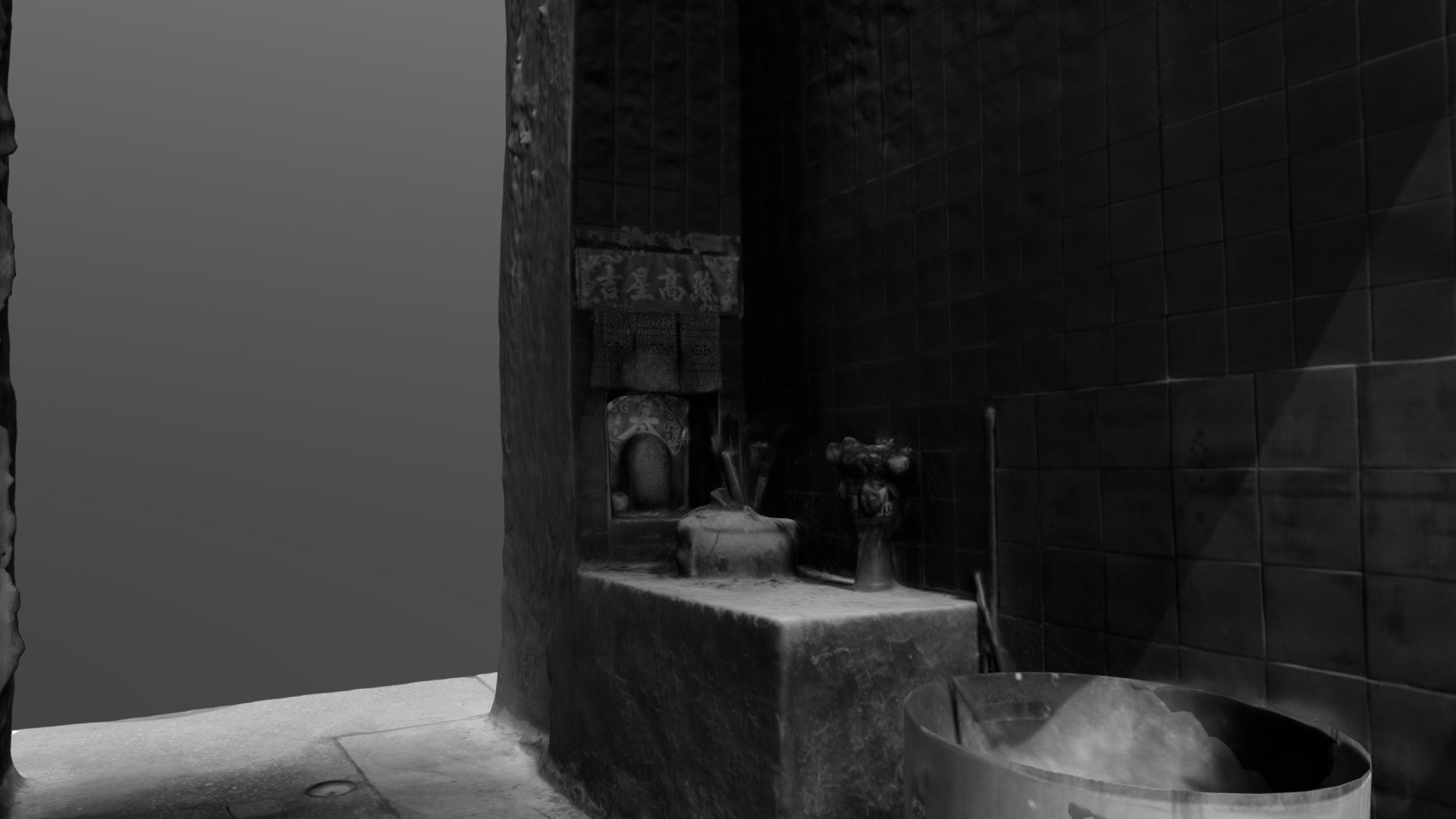
土地公(吉慶二圍)(黑白版本)
sketchfab
In the past, the narrow alleys of Ji Qing Alley and many other parallel lanes were like a fisherman's net thrown into the sea, with streets barely wide enough for people to pass through. The width of these streets was inherited from the old beach shacks and stairs along the shore. The tightly packed houses on either side also reflected the solidarity of the fishing community. In the Qing dynasty during the Tongzhi period, the private ferry crossing - Ji Qing Yiwei and Erwei - which had been filled in and leveled at Chutougang, was expected to bring new land to the people on the shore. Unfortunately, the "T" shaped ferry formed a road that evolved into a city's thorn - the fishhook-shaped dock walked along the coastal promenade, convenient for ships to anchor, while the inner side was best suited to avoid wind and waves, one good point and two advantages, making full use of the shore. This design was originally followed by roads like Lou Wan Dock, Royal Number One Dock, etc. However, after landing on the beach, it was destined to become a thieves' den - even if only one small area remained unpaved, surrounded by walls, Ji Qing Erwei and Men Guanwei each had only one gap, long-term plans for two enclosures were relegated to planners' dreams, development space was tightly enclosed by wooden houses.
With this file you will be able to print 土地公(吉慶二圍)(黑白版本) with your 3D printer. Click on the button and save the file on your computer to work, edit or customize your design. You can also find more 3D designs for printers on 土地公(吉慶二圍)(黑白版本).
